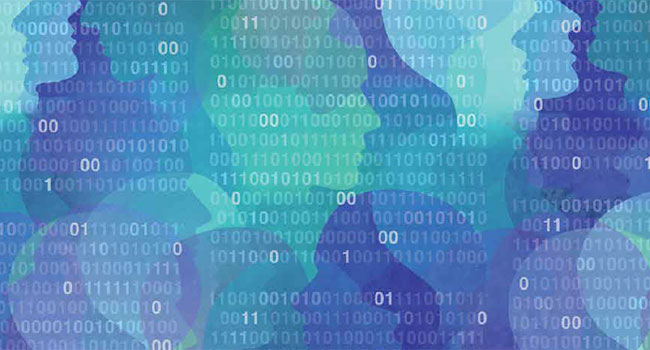
Securing Campuses with Innovative Technology (Without Sacrificing Privacy)
As campuses ramp up measures to safeguard students, they must also take measures to protect the data privacy.
- By Brett Whitney, Steven Dwek
- June 01, 2019
To keep students and faculty
safe, we can do far better than
electronic passkeys and simple
metal detectors. As sophisticated
technologies like artificial
intelligence are brought to bear in more
and more industries, it’s time that we use
these and other innovations to promote campus
safety.
Officials recognize the vital role advanced
technology can play in keeping schools safe,
which is why the U.S. Justice Department has
issued grants to support technological solutions
that can thwart threats on campuses
and accelerate law enforcement response.
The basic idea behind some of the latest
developments in campus security technology
is simple yet bold. If smart grocery stores can
track our purchases as we place items in our
carts, we should be able to create smart campuses
with the ability to detect when a gunman
or other meaningful threat has entered
a campus building.
The technology to support this is not far
off in the future. Campus safety innovations
designed to stop malicious actors in their
tracks are beginning to penetrate the market
and will soon become widespread. Schools
are rolling out AI-powered camera software
that can monitor activity on campus, detect
anomalies, and flag potential risks. As the
Washington Post noted, these technologies
do not necessarily use facial recognition,
which has drawn the ire of many privacy
advocates, but instead track student movement
and behavior, using multiple cameras
to create situational awareness across the
campus and alert administrators to the
emergence of a potential threat.
With the capacity to observe thousands of
people at once, such solutions are far more
efficient and perceptive than the naked
human eye or standard security cameras
alone. Per the self-reporting of companies in
the industry, the algorithms powering these
cameras can detect a weapon being pulled
with up to 99 percent accuracy, and while
human professionals must still exercise ultimate
responsibility when it comes to deciding
how to respond to each situation, few
would argue with the idea that security professionals
need more advanced tools, not
fewer, to aid them in making decisions that
will keep their campuses safe.
Proactive security measures are crucial,
but the unfortunate reality is that campus
crime will never be eliminated completely.
When it does occur, it is of paramount
importance to give campus security officers
and local law enforcement professionals the
tools they need to respond as rapidly as possible.
Gunshot detection technology is one
such tool. Using advanced sensors to pinpoint
the location of gunshots, these systems
convey location information to security professionals
within a matter of seconds, effectively
functioning as a 911 call and helping
speed response times. In an active shooter
situation—in which those in the immediate
vicinity of an incident may not be able to
safely dial 911—gunshot detection technology
can be literally life-saving.
While campuses will need to make investments
in key safety technologies—with the
potential ROI being lives saved and crimes
averted—they can also empower students
themselves to keep safe through a form of
technology that to the average user is decidedly
more accessible than, say, artificial intelligence
software. This cutting-edge technology?
The mobile phone.
As part of their efforts to raise student
awareness about campus security issues, colleges
and universities should inform students
of such apps, or perhaps even create
their own, provided that these apps are connected
to campus security and local law
enforcement. The digital natives who populate
today’s campuses do not need to be sold
on the notion that technology can make key
services more accessible and convenient. So,
when it comes to ensuring their own safety,
students would likely avail themselves of
these tools.
As campuses ramp up measures to safeguard
the security of students, faculty, and
other staff, they must also take measures to
protect the data privacy of those they seek to
protect. With the world growing more connected
by the day, the security and privacy of
individual data has moved to the forefront of
public debate, and campuses should be attentive
to these issues. Data collected and analyzed
through AI-based security camera, for
example, must only be accessible to authorized
personnel, and records on specific
people collected through security systems
should be anonymized to prevent data abuse
and the unwarranted targeting of individuals.
By taking steps to promote data privacy,
high schools, colleges and universities can
achieve both data security and greater physical
security.
In their efforts to drive down crime rates,
campus officials should commit to a comprehensive
evaluation of the emerging technologies
that can improve campus safety within
reasonable budget constraints. From there,
officials can leverage the best technologies
for their situation to implement emergency
response plans. Schools are incubators for
pioneering innovations, it’s only fitting that
they embrace innovative technologies in
their quest for greater safety.
This article originally appeared in the May/June 2019 issue of Campus Security Today.